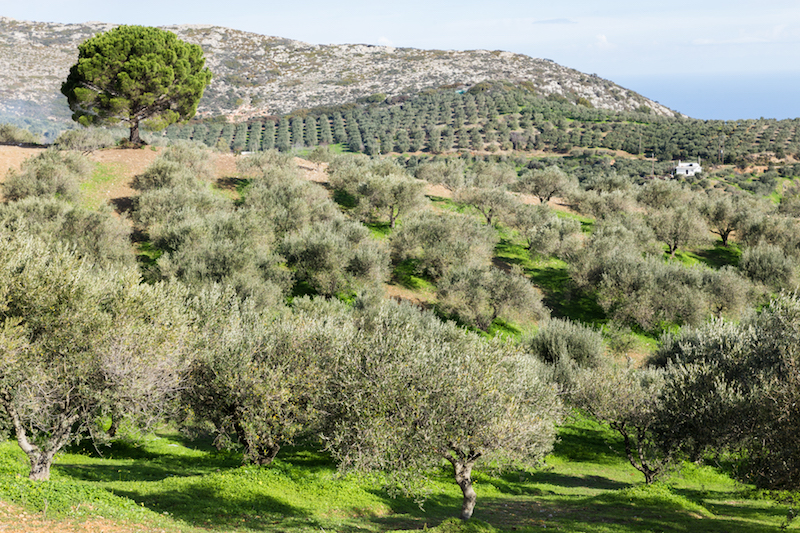The authentic olive groves on Crete are known for their (seemingly) randomly planted trees. In the Netherlands, we tend to plant our fields with almost neurotic symmetry and precision. In Greece, it’s a different story. Olive trees are ideally spaced about 5 to 6 meters apart. But why?

Spacing Between Olive Trees
Traditional olive oil production is mostly found in dry, mountainous regions. A key characteristic of this method is the spacing between the trees: about 5 to 6 meters. Without irrigation or fertilizer, olive trees need a lot of space. We do this deliberately to keep the process as authentic as possible. Harvesting is also done in the traditional way. The olives are knocked from the trees and caught in nets. Using machines is nearly impossible, since the trunks are often too thick and the branches grow in all directions.
Harvesting
In traditional production, yields range between 2 and 5 tons of olives per hectare (a hectare is about the size of two football fields). From that, you get roughly a quarter in olive oil. However, it can take up to 15 years before a tree reaches full production. On top of that, traditional olive groves are usually quite small — on Crete, the average size is around one and a half hectares. So it’s probably no surprise that fewer and fewer traditional olive farmers can make a living from their harvest.
Fortunately, we work together with other farmers on Crete, which allows us to keep the traditional method alive. That way, we preserve a bit of the old while also embracing the new.

















